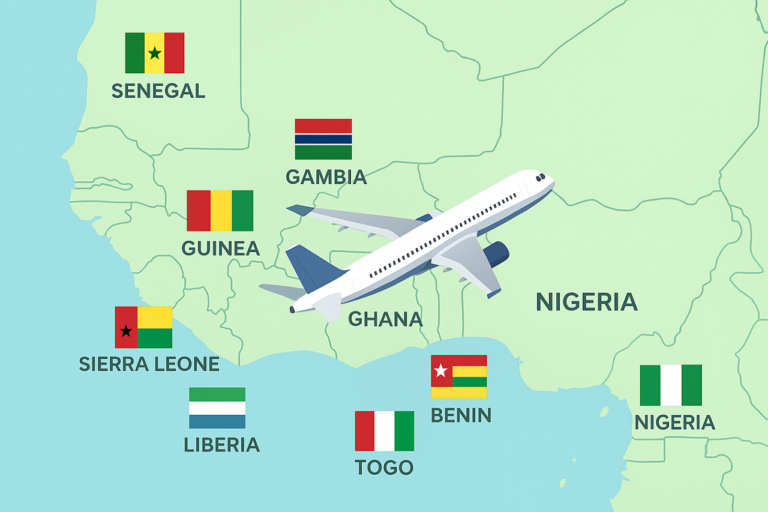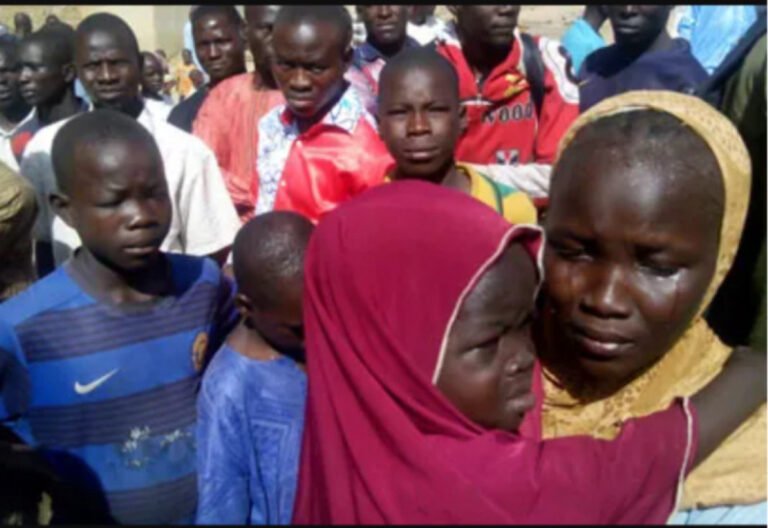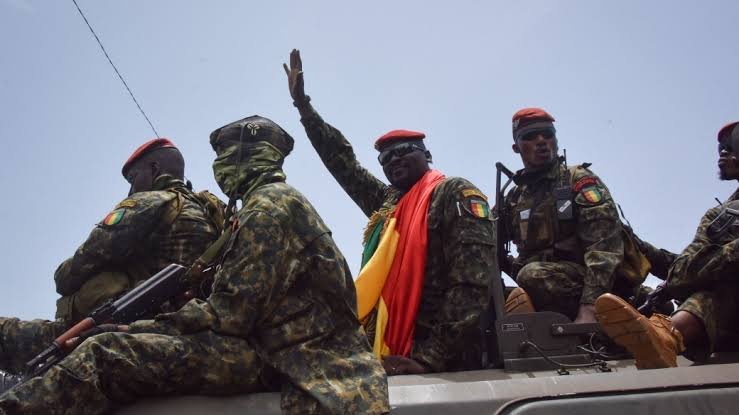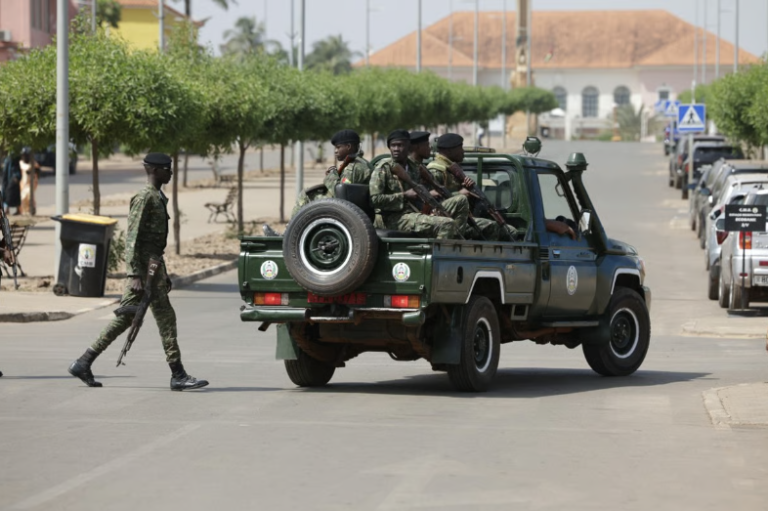By Qosim Suleiman, Abdullah Tijani, Amma Moussa & Gaston Sawadogo
(This story is the first of a two-part series. It was supported by the Pulitzer Center).
Five years ago, Aliyu Garba, 45, was summoned to his village head’s palace to receive some exciting news: He would now participate in a massive tree-planting project commissioned by the National Agency for Great Green Wall (NAGGW) in Rumfar Akke, a village in Zamfara State, north-west Nigeria. It was an acknowledgement of his years of diligent farming, and he was proud of it.
However, the story changed when he almost died while watering the plants in 2022. “I was in the bush when I heard multiple gunshots,” he told The Liberalist. The sounds of gunfire were not strange to him; attackers often raided the village and abducted locals for ransom. He hid deep in the lush forest to evade abduction, until he ran out of luck. The terrorists found him and beat him savagely. Garba spent two weeks in the kidnapper’s den before his family sold most of his belongings to raise the ₦200,000 ransom demanded for his release.
Nigeria’s north-west region is at the heart of a decade-long rural terrorism scourge. The terrorists have been expanding their territories and spreading fear wherever they go. They impose taxes, kill those who oppose them and kidnap for ransom. In 2024 alone, more than 1,600 people were abducted in over 200 incidents in the region, according to SBMIntel, an intelligence, security analysis and strategic consulting firm.
Coincidentally, the reforestation efforts under Africa’s ambitious Great Green Wall project cut directly through the places that have become hotspots of banditry. Garba was kidnapped while working on this project.
Aliyu Garba in a high-visibility vest used for the tree planting exercise.
However, his trauma is just one part of the story. His efforts to restore the environment may have been unnecessary if environmental conditions, exacerbated by human activities, had not caused desertification and land degradation along the Sahel five or six decades earlier.
Sahel’s land degradation
A few villages away, Ibrahim Umar, 58, plants groundnuts, millet, and sorghum. About 12 years ago, he noticed something strange: the soil was becoming more sandy and less fertile. He quickly attributed it to the felling of trees around the area, which he participated in.
“We used to have trees around the area, but people started felling the trees. We also cut some for fuelwood,” he said.
Umar began using fertilisers, but the situation hardly improved many years later. “It also affected my farm produce. The portion of land where I used to harvest about 20 bags of groundnuts was producing eight to 10 bags even when I rotated the crops,” he said.
Data from NASA EarthData reveal that the Sahel region began suffering from severe drought in the 1960s, triggered by an unusual drop in rainfall. Since then, shifting dunes have crept steadily southward, swallowing fertile land. Over the past seven decades, human actions like overgrazing and widespread deforestation have worsened this slow-moving disaster.
Umar’s experience is not a local problem. The crisis stretches across the Sahel belt, from Senegal’s western shores in West Africa to Djibouti in East Africa. As the once-green landscapes give way to barren earth, farmers in these regions experience lower yields and rising food insecurity, while the green, lush environment recedes more quickly.
Meanwhile, the Sahara Desert continues its relentless advance, expanding by nearly 10 per cent since the 1920s and inching ever closer to the rich lands to the south.
Greening the Sahel
The African Union (AU) recognised this as a challenge. In 2005, the then-Nigerian President Olusegun Obasanjo proposed a desert-blocking wall, which the AU approved in 2007.
With the ambitious project, christened the ‘Great Green Wall Initiative (GGWI)’, the AU planned to plant trees to build a green area running 8,000 kilometres from Senegal to Djibouti. The project would be a barrier to the wind pushing the Sahara Desert.
The wall of trees, first mentioned in the 1970s when parts of the Sahel experienced persistent droughts, will pass through 11 countries along the Sahel, namely: Burkina Faso, Chad, Djibouti, Eritrea, Ethiopia, Mali, Mauritania, Niger, Nigeria, Senegal, and Sudan.
It extends through northern Senegal, southern Mauritania, the central areas of Mali and Niger, north of Burkina Faso and northern Nigeria.
This is a map showing the green wall in West Africa and the communities the ambitious initiative was intended to reach, most of which are plagued by an insurgent presence. Mansir Muhammed illustrated the map. The green wall data was sourced from Esri Living Atlas.
“It is a crazy project,” the then Senegalese President Abdoulaye Wade said when he launched GGW at a conference of Sahel countries in 2005. “But a touch of madness helps when conceiving something which has never been conceived.”
On proposed completion in 2030, the Great Green Wall is expected to be the largest living structure on the planet, three times the size of the Great Barrier Reef in Australia.
“More than anywhere else on Earth, the Sahel is on the frontline of climate change, and millions of locals are already facing its devastating impact. Persistent droughts, lack of food, conflicts over dwindling natural resources, and mass migration to Europe are some of the many consequences. Yet, communities from Senegal in the West to Djibouti in the East are fighting back,” the project’s website states.
While the project has recorded relative success over the years and across the targeted countries, challenges are slowing its progress.
In West African countries of Burkina Faso, Niger and Nigeria, armed groups and jihadist insurgents have forced the abandonment of crucial reforestation sites. Environmental workers and local communities are caught in the crossfire, struggling to sustain the project amidst daily threats to their lives.
When he was asked to be part of the Mashema project in Zamfara State, Shehu Na’ajibi’s decision to decline was easy. He had had multiple run-ins with terrorists and narrow escapes from attacks on his farm and in his village. Each time, he survived by a stroke of luck and was no longer willing to risk it.
One time, terrorists raided their village, looted their belongings, abducted a family member and demanded a ransom. But residents like Na’ajibi knew that while ransom payment is a possibility of freeing abductees, it is not a guarantee. In many cases, the abductors collect the ransom and still kill the victim, sometimes sending the corpse to the family. Again, he was lucky, the family member was released after the bandits received ransom.
“Even when they explained to us that the project is for the preservation of the environment and to prevent erosion, I declined,” Na’ajibi said. As he feared, the project site eventually became a transit route for marauding bandits.
The scenario is similar in Kanwa, Zamfara State, where daring bandits occupy some parts of the community and treat the tree-planting project location as their territory. As if to taunt the tree planters, Shehu Usman, who worked on the project for years, said the bandits now graze their cattle on the planted areas and have vandalised the watering facilities.
“We don’t have any assurance of going there and coming back safely,” he said. “The bandits have caused great setbacks for this tree plantation.”
Abandoned reforestation site in Zuri, Zamfara state
Unlike Usman, who could only watch the destruction of his work from a distance, Dila Danladi had two terrifying encounters with the terrorists. Both happened on a Friday, and Danladi, with a spiritual lens on his experiences, ties each one to the will of Allah.
During the first incident, the bandits announced their presence with gunshots. “Five of us were working there that day. Myself, Muntari, Haruna, Sa’idu, and Jatau,” he recalled. As they heard the gunshots, each ran in a different direction for dear life. “But only two of us escaped,” he said. The remaining three were kidnapped until ransom was paid for their release.
In the second incident, Danladi was not as lucky. He was alone at the project site in Gidan Jaja, Zamfara State, when gun-wielding bandits accosted him and marched him deep into the forest. He was released after community members raised the ransom.
Although he has not returned to the project site since then, Danladi remains proud of their work. “We planted at least 4,000 trees… and each was growing how we wanted it,” he said. “But bandits have brought a huge setback. They crippled and hurt every aspect of our life.”
The trees consumed by terror
The National Agency for the Green Great Wall (NAGGW) implements Africa’s Green Great Wall project in Nigeria. As part of the project, the agency is planting trees across 11 Nigerian states that fall within the geography of the GGW projects—most of them on the borders with the Niger Republic.
However, most of these states are witnessing active security challenges, such as rural terrorism in Katsina, Zamfara, Sokoto, and Kebbi and an Islamist insurgency by Boko Haram and the Islamic State’s West Africa Province (ISWAP) in Adamawa, Borno, and Yobe states. Only Bauchi, Gombe, Jigawa, and Kano states are peaceful enough for the project’s implementation. However, corruption and poor monitoring hindered the project’s success even in those cases.
In the country’s northeastern region, insurgents seeking to establish an Islamic State have terrorised civilians and the Nigerian military for more than a decade. The insurgency has displaced over two million people, according to the United Nations.
In communities like Kwashabawa, Faru, Bakon Gebe, Gidan Jaja, Rumfar Akke, Unguwar Lalle, Lajinge, and Tsamaye in Sokoto and Zamfara states, the project is stalled as armed groups lay siege to the towns and villages. Residents and officials of the NAGGW have retreated over fear of attacks.
“It’s impossible to work there now,” Garba said. “God knows there’s no amount they’ll pay me to return there.”
Local Vigilante in the middle of some surviving trees in Zamfara, Northwest Nigeria
In a 2021 report by the monitoring department of Nigeria’s Ministry of Finance, a team dispatched to conduct a physical verification exercise of the NAGGW projects could not visit many communities in the region due to insecurity.
The team, which also reported the bandits’ vandalisation of facilities, concluded that the security challenge was a significant impediment to the tree-planting projects.
“Insecurity in the communities slowed down the implementation process, as the monitoring team could not visit some sites due to frequent activities of bandits,” the monitoring team reported.
Soaked in Fear
In the northern reaches of Burkina Faso, where red dust clings to skin and thorny shrubs bend to a ceaseless Sahelian wind, the fight against desertification also faces an enemy far deadlier than drought. Insecurity has become the most stubborn thorn in the side of the Great Green Wall.
Five regions, Centre-Nord, Central Plateau, Sahel, Est, and Nord, comprise the core of Burkina Faso’s intervention zone for the initiative. But the ground meant for saplings in these areas is soaked in fear. Once vibrant, reforestation communes like Centre-Nord’s Bourzanga have become war fronts in the country’s escalating insurgency. In most places, villagers flee, and restoration workers are forced into hiding.
“Our model farmers have been killed,” said Nabasnogo Pananditigri, the national coordinator for the Great Green Wall in Burkina Faso. “We can only plant within sight of homes now.”
Pananditigri’s voice holds conviction and grief. At the height of its ambition, the Great Green Wall in Burkina Faso rallied communities. But since 2017, insurgents from groups like the Islamic State in the Greater Sahara (ISGS) and the Support Group for Islam and Muslims (GSIM) have waged war on state presence and anything tied to it, including environmental projects. The violence has displaced more than two million people as villages where trees were once nursed into life stand empty.
The survival of the Great Green Wall Initiative is significant for Burkina Faso due to its history of forest loss over the past decades. According to Global Forest Watch, from 2001 to 2024, Burkina Faso lost 129 hectares of tree cover. Nearly 88 per cent of this loss occurred due to direct deforestation, not natural causes, causing an emission of 869 kilotonnes of CO₂ equivalent.
The Centre-Nord and Centre-Ouest regions alone accounted for 68 per cent of the country’s tree loss, with Centre-Ouest losing 49 hectares, over four times the national average.
Even regions like Est, once considered a forest stronghold with over 112,000 hectares of natural cover, are now buckling under violence and neglect. In 2024 alone, Est lost 124 hectares of natural forest, releasing nearly 23 kilotonnes of carbon dioxide into the atmosphere. This is an unexpected reversal for a region that had gained more than 6,450 hectares of tree cover between 2000 and 2020, though research reveals that almost none of that growth came from the Great Green Wall.
According to Global Forest Watch, “between 2000 and 2020, 99 per cent of tree cover gain occurred outside of plantations.” That is, the kind typically funded by Great Green Wall programmes.
A geographical information system (GIS) investigation shows that as populations retreat under the weight of insurgent violence, their exit leaves behind land undisturbed by agriculture, grazing, or fuel collection. With fewer hands to clear land for farming or cut wood for cooking fires, trees began surviving and spreading their canopies.
However, in Dori and Aribinda in Burkina Faso’s Sahel region, where nearly 600,000 seedlings were planted between 2013 and 2015, planting has slowed to a trickle. The community-led operations that powered restoration have given way to whispered updates about insurgent sightings.
“Model farmers have been killed,” admitted Pananditigri.
According to the Coordinator of the National Youth Coordination for the Environment and Climate (CONAJEC), Aboubacar Lougue, due to rising insecurity, “we had to abandon sites.” He lamented that security concerns have also caused donors to withdraw and demand that the areas chosen for their projects be more accessible to avoid exposing their staff to insecurity.
“Funders increasingly demand that project sites be in government-controlled areas to protect personnel,” said Lougue. “We had to focus on where government institutions are still present to ensure monitoring.”
One project that has dared to continue is the “Fleuron Grande Muraille Verte,” launched in March 2024 and backed by over 3 billion CFA francs ($5 million). However, the project operates in five relatively secure towns: Yako, Korsimoro, Seytenga, Bogandé, and Yamba.
“We had to choose areas where the administration is present so that we could conduct ongoing monitoring,” said Damas Poda, a forestry expert with FAO Burkina Faso.
A farmer tending a young plant on a dune stabilisation site in Nguel Borno, Niger Republic.
In Niger, the seedlings in Nguel Borno, a village of a few herders’ camps nearly 70 km north of Diffa, are barely knee-high. They are scattered across a strip of cracked, sun-blistered sand where the desert creeps closer yearly. On a mid-April afternoon, under a sky seething with heat, 49-year-old Moussa Saley squats beside a young neem tree and nudges its fragile stem.
“Sometimes you think they’re dead,” he said, brushing sand off the wilted leaves. “But when the rain comes, they all come back to live.”
It is a hopeful sentiment, but an increasingly rare one along the Great Green Wall’s line. In the country’s southeastern Diffa region and western Tillaberi, two of the territories the Wall was designed to run through in Niger Republic, dozens of planned and planted zones have been quietly abandoned. Armed insurgencies by Boko Haram in Diffa and Islamic State affiliates in Tillaberi have turned tree-planting and monitoring into a life-cost risk.
Garba Moumouni, director of L’Initiative pour l’Arbre, an environmental nonprofit based in Niamey, said his team had everything in place for the 2023 planting season. They had prepared thousands of seedlings, gardening tools, and youth volunteers trained in sustainable techniques to be dispatched to villages across the Tillabéri and Tahoua regions. But when militant attacks surged along Niger’s western border with Mali and Burkina Faso, particularly in the Tillabéri region, the roads became too dangerous to travel, leading to the cancellation of the entire season.
“We had to abandon entire hectares,” said Moumouni.
A similar scenario happened in Nigeria. Malam Tanimu, a security guard at the tree-planting project site in Faru, Zamfara State, quit his lifeline job after facing horror head-on.
One day, after the Muslim night (Isha) prayer, Tanimu went to the project site in Faru to resume his dusk-to-dawn guard work. Shortly after he settled that evening, multiple sounds of gunshots pierced the silence of the night. “I was terrified because I knew the situation,” he said.
As he tried to escape from the location to safety, someone saw him in the pitch-dark environment. It was a bandit. They captured him, tied him alongside other kidnapped victims and took him to their camps in the forest. He spent the next two days without food. When the bandits began to feed them, they were given poorly cooked vegetables and dusa, a local feed for livestock.
“It was at the camp that I decided I must stop going to the project site,” Tanimu said. “I couldn’t continue with it. Nobody goes there anymore. That’s why I had to give up and leave the place for them [bandits].”
He said they planted 2,500 trees in the project’s first phase, but the people who did the planting stopped showing up. “If there was security,” said Tanimu, “we would have gone ahead with the work. But you see, insecurity can wreck everything in this life.”














